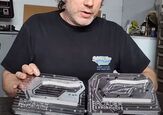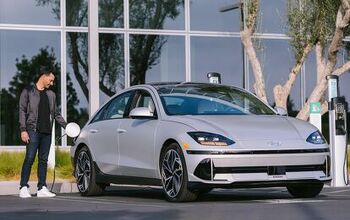Head Games: GM Drops 13 Lbs From Its 3.6 V6
One of the most consistent and valid criticisms of GM’s product development, even in the post-Lutz era, is the class-leading weight that so many new GM products carry around with them. To a number of industry observers, the lingering weight problem that so many of GM’s cars struggle with is a sign of corners cut in the design process. GM’s cars may look, feel and drive better than they did five, let alone ten, years ago, but clearly the battle for truly “world class” products isn’t over.
And now we’re getting some of the first indications that GM is taking the weight issue seriously, as GreenCarCongress reports that GM’s engineers have pulled 13 lbs out of its 3.6 liter direct-injected V6 simply by redesigning its head. Given that the 3.6 is already one of GM’s better engines, and is used in a huge number of its vehicles, that’s a solid first step as The General takes on the battle of the bulge.
More by Edward Niedermeyer

































Comments
Join the conversation
Did they fix the timing chain stetching problems? That should be their priority.
"Couldn’t make it any worse than the last 40 years of their reputation." It's gems of wisdom like this that make this site so interesting
I'm wondering how long it will be before the automotive engineering community re-embraces the monobloc again? Especially with today's advanced casting techniques as compared to the turn of the last century's methods, this could be a reality. Just think, less parts, less chances for assembly or part failure, less cost, probably less weight, too...
This has been done in the Honda K24 engine, starting with the TSX. It's not so much the reliability I'm concerned about- the design is fairly compromised in terms of exhaust gas flow (most of the gains they made were on the intake side), and most of the heat of the exhaust is actually dumped inside the cylinder head. More importantly, any Camaro enthusiasts that wants to swap on aftermarket headers for a significant power increase are in for a big disappointment.